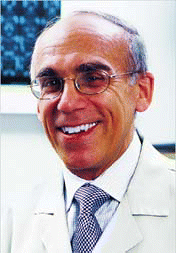A variation of genioglossus advancement is a newer technique that uses the Repose System. Instead of putting a hole and taking part of the bone out and then bringing the muscle forward, you just put a suture into the base of the tongue, and then you just hook it to the screw, and that suture keeps the tongue from falling back, he said. Variations of this approach are currently under study.
Explore This Issue
January 2008The fourth level of treatment-open resection of the tongue base-is highly aggressive and rarely performed. It has mostly fallen out of favor in North America, Dr. Friedman said.
The fifth level of treatment focuses on creating more space in the airway via a bimaxillary advancement. The upper and lower jaws are cut; the mandible and the maxilla are cut. They’re brought forward so there is more space, he said. However, this procedure requires patients to undergo a long rehabilitation.
Use of Medical Devices
Tucker Woodson, MD, Professor and Chief of Sleep Medicine at the Medical College of Wisconsin, reinforced the idea that apnea is not a segmental problem, and that the whole airway needs to be assessed. It’s a change in thought, he told ENT Today.
Dr. Woodson pointed out that dental appliances have an important role to play in a patient whose tongue is causing a problem, but many otolaryngologists don’t know much about them. He advises taking the time to become familiar with one or two devices.
 Surgery is designed to be a fine line in a blend between changing anatomy the minimum amount and correcting as many of the symptoms as possible. We are never completely curing the problem.
Surgery is designed to be a fine line in a blend between changing anatomy the minimum amount and correcting as many of the symptoms as possible. We are never completely curing the problem.-Michael Friedman, MD
There are more than forty devices on the market, but there are a couple of key features to help choose effective ones, he said. One is look for appliances that cover the entire dental arch; the second is appliances that can be adjusted by the patient.
When tongue position is an issue, the job of these devices is to hold the jaw forward and prevent the tongue and the tissues of the throat from collapsing in the airway, he said.
Devices can be fitted by physicians who are familiar with dental anatomy and the teeth. This should be done by ENTs. Oral appliances are not treating a dental disease, they’re treating a medical disease, he said. But working with a dentist is an option.
Leave a Reply